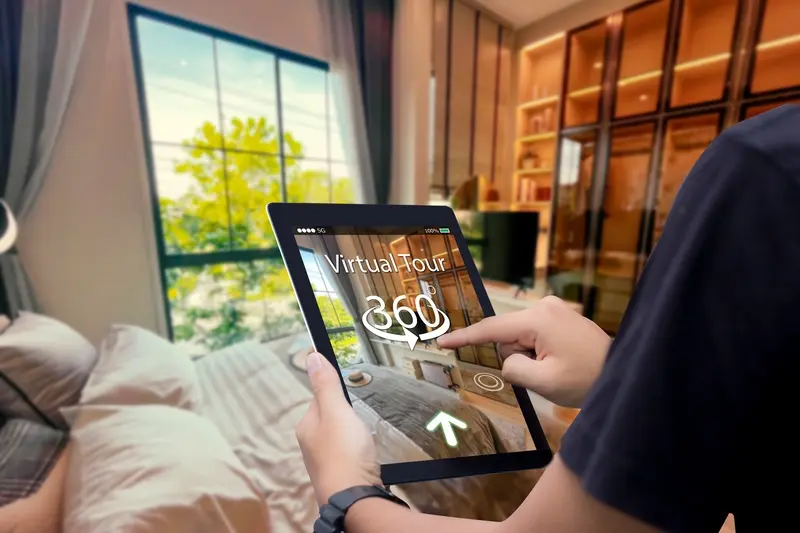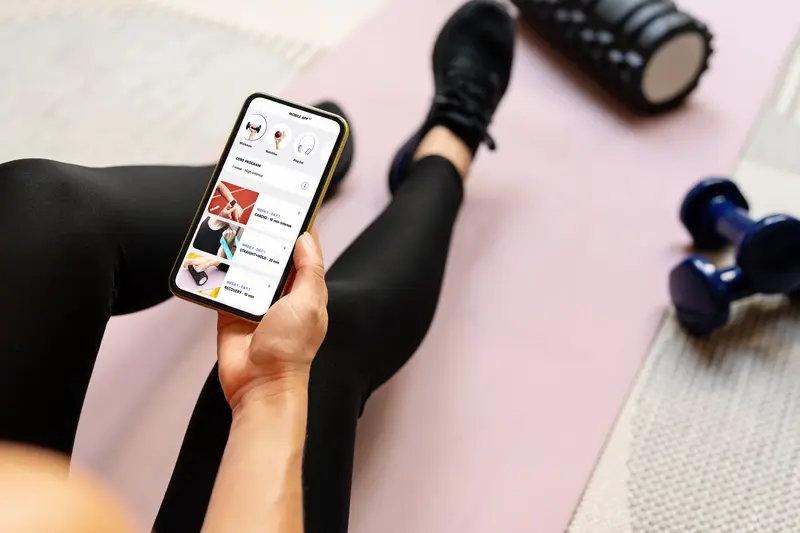How Much Does It Cost To Build A Property App Like Rightmove?
Every minute, over 2,000 property searches happen on Rightmove—that's more than 3 million searches every single day. The platform has become so dominant that it's practically synonymous with house hunting in the UK. But here's what most people don't realise: building a property app like Rightmove isn't just about creating a search function and listing some houses. The cost can range anywhere from £50,000 for a basic version to well over £500,000 for a fully-featured platform.
After working on dozens of property apps over the years, I've seen clients drastically underestimate what goes into creating a successful property platform. They think it's straightforward—just add some photos, a map, and a contact form. Wrong. The reality is that Rightmove's success comes from years of refinement, massive data processing capabilities, and features that most people never even notice but absolutely depend on.
The difference between a basic property app and a market-leading platform like Rightmove isn't just features—it's the invisible infrastructure that makes everything work seamlessly at scale.
This guide will break down the real costs involved in building a property app that can compete in today's market. We'll explore what makes Rightmove tick, which features drive up development costs, and the ongoing expenses that many businesses forget to budget for. By the end, you'll have a clear understanding of what investment is needed to build something truly competitive.
What Makes Rightmove So Successful
Rightmove didn't become the UK's leading property portal by accident—they cracked a formula that most competitors still struggle to replicate. The secret isn't just about having lots of properties listed (though that helps!). It's about creating a platform that both estate agents and house hunters actually want to use, which is harder than it sounds.
Market Timing and Network Effects
Rightmove launched at just the right moment when the internet was becoming mainstream but before mobile apps dominated everything. They built relationships with estate agents early on, creating what developers call a "network effect"—the more agents that joined, the more valuable the platform became for buyers; the more buyers that used it, the more agents wanted to be there.
Simple Yet Powerful Features
What I find brilliant about Rightmove is how they kept things simple whilst packing in powerful search functionality. Users can filter by price, location, property type, and dozens of other criteria without feeling overwhelmed. The map integration works seamlessly, photos load quickly, and the whole experience feels effortless. Behind the scenes though, this simplicity requires sophisticated technology—fast databases, smart search algorithms, and robust infrastructure that can handle millions of users browsing properties simultaneously.
This combination of perfect timing, network effects, and user-focused design is what made Rightmove the giant it is today. Understanding these success factors is crucial when budgeting for your own property app development.
Core Features That Drive Property App Costs
When I look at property apps like Rightmove, I see layers of complexity that most people don't notice. The search function alone—something users take for granted—requires sophisticated filtering systems that can handle millions of property listings simultaneously. Location-based searches, price ranges, property types, and bedroom counts all need to work together seamlessly. That's not simple coding; that's serious engineering work.
The mapping integration is another major cost driver. You can't just plop a basic map onto your app and call it done. Property apps need interactive maps that show property locations, local amenities, transport links, and neighbourhood data. This requires licensing agreements with mapping providers and custom development to make everything work smoothly together.
Essential Features and Their Impact
- Advanced search and filtering systems
- Interactive mapping with property overlays
- High-resolution image galleries and virtual tours
- User accounts and saved searches
- Push notifications for new listings
- Mortgage calculators and valuation tools
- Agent contact forms and messaging systems
The photo galleries and virtual tours are particularly expensive features. Users expect crisp, fast-loading images that work across different devices and connection speeds. This means investing in content delivery networks and image optimisation systems.
Start with core search and listing features first, then add advanced functionality like mortgage calculators and virtual tours in later development phases to manage costs effectively.
Technical Architecture and Development Complexity
Building a property app like Rightmove isn't just about creating pretty screens—the real challenge lies in the technical foundations that users never see. I've worked on plenty of property apps over the years, and let me tell you, the backend infrastructure can make or break your budget faster than you'd think.
The complexity starts with data management. Property apps handle massive amounts of information that changes constantly—listings go live, prices update, photos get added, and properties sell. Your database needs to process thousands of searches per minute while keeping everything lightning-fast. This means investing in robust cloud infrastructure, smart caching systems, and database optimisation that can cost anywhere from £15,000 to £50,000 just for the initial setup.
Key Technical Components That Drive Costs
- Real-time search algorithms that filter millions of properties instantly
- Image processing systems for property photos and virtual tours
- Geolocation services for map integration and area searches
- User authentication and secure payment processing
- Third-party integrations with estate agents and property feeds
- Push notification systems for saved searches and alerts
The development team structure also affects costs significantly. You'll need backend developers, mobile app developers, database specialists, and DevOps engineers. A skilled team for a Rightmove-level app typically costs between £8,000-£15,000 per month during active development phases.
Design and User Experience Investment
When I'm working with clients on property app projects, one of the biggest cost surprises is always the design phase. People see apps like Rightmove and think "how hard can it be to make that?"—but there's an enormous amount of thought that goes into every single screen, button, and interaction. The reality is that property apps need to handle complex data in a way that feels simple, and that's no small feat.
A basic property app design might cost you anywhere from £8,000 to £15,000, but if you want something that truly competes with Rightmove's polished experience, you're looking at £20,000 to £40,000 or more. This covers everything from user research and wireframing to visual design and prototyping. The property search process involves multiple steps—filtering, viewing listings, saving favourites, contacting agents—and each one needs to feel effortless.
What Makes Property App Design Expensive
Property apps are particularly tricky because they serve multiple user types simultaneously. Buyers want different things from sellers; landlords have different needs from tenants. Creating an interface that works for everyone without feeling cluttered requires serious design expertise.
Good design is like a good joke—if you have to explain it, it's probably not working
The mobile experience is where most of your budget should go. People browse properties on their phones during commutes, lunch breaks, and weekend walks. If your app doesn't nail that mobile-first experience, you've already lost the battle regardless of how much you spent on development.
Regional Variations and Market Considerations
Building a property app isn't a one-size-fits-all situation—what works brilliantly in London might fall flat in Manchester, and what succeeds in the UK could be completely wrong for Australia or Canada. I've learnt this the hard way over the years, watching perfectly good apps struggle simply because they didn't account for local differences.
The property market varies massively from region to region. In some areas, people expect to see energy efficiency ratings prominently displayed; in others, they couldn't care less. School catchment areas might be make-or-break information in family suburbs but irrelevant in city centres. Your app needs to reflect these priorities, and that means different features for different markets.
Legal and Regulatory Requirements
Property laws change dramatically between countries and even states. What information you're legally required to show, how you can collect user data, and whether you need special licences all depend on where you're operating. Getting this wrong isn't just expensive—it can shut your app down completely.
Local Competition and User Behaviour
Every market has its dominant players and unique user habits. Some regions love detailed property history; others focus on future development plans. Understanding these preferences before you start building will save you thousands in development costs and prevent costly redesigns later.
Hidden Costs and Ongoing Expenses
Building a property app like Rightmove is just the beginning—the real financial commitment starts after launch. Most people focus on development costs but completely overlook the ongoing expenses that can quickly add up to thousands of pounds each month.
Server costs are your biggest surprise. A property app handles massive amounts of data, high-resolution images, and thousands of simultaneous users. Your hosting bills will grow with your success, and during peak times (like Sunday afternoons when everyone's browsing properties), you'll need extra server capacity. Third-party integrations for property feeds, mapping services, and payment processing all come with monthly fees that scale with usage.
Budget 30-40% of your initial development cost for the first year's running expenses—this covers servers, licenses, and basic maintenance.
Annual Running Costs Breakdown
- Server hosting and cloud services: £2,000-£8,000
- Third-party API subscriptions: £3,000-£12,000
- App store fees and payment processing: £1,500-£5,000
- Security certificates and compliance: £500-£2,000
- Bug fixes and minor updates: £5,000-£15,000
- Legal and regulatory compliance: £1,000-£3,000
Don't forget about marketing costs, customer support systems, and the need for regular feature updates to stay competitive. Your property app isn't a one-time purchase—it's an ongoing business that requires continuous investment to succeed.
Conclusion
Building a property app like Rightmove isn't cheap—there's no getting around that fact. We're talking about serious money here, with costs ranging from £150,000 for a basic version to well over £500,000 for something that truly competes with the big players. That's a lot of cash, and I've seen plenty of businesses underestimate just how much goes into creating something this complex.
The thing is, most people focus on the upfront development costs and forget about everything else. The ongoing expenses—server costs, third-party integrations, maintenance, marketing—these can easily double your initial investment over the first few years. I always tell my clients to budget for at least 20% of their development costs annually just for keeping things running smoothly.
But here's what I've learned after building countless apps over the years: the most expensive mistake isn't overspending on development—it's building something nobody wants to use. Before you worry about whether to spend £200,000 or £400,000, make sure you've got a solid plan for attracting users and competing with established players like Rightmove, Zoopla, and OnTheMarket.
If you're serious about this venture, start small, validate your concept, and scale up gradually. Your wallet will thank you for it.
Share this
Subscribe To Our Learning Centre
You May Also Like
These Related Guides

Should My Real Estate App Include Virtual Tours And How Much Do They Cost?

How Much Does It Really Cost To Build An MVP?



